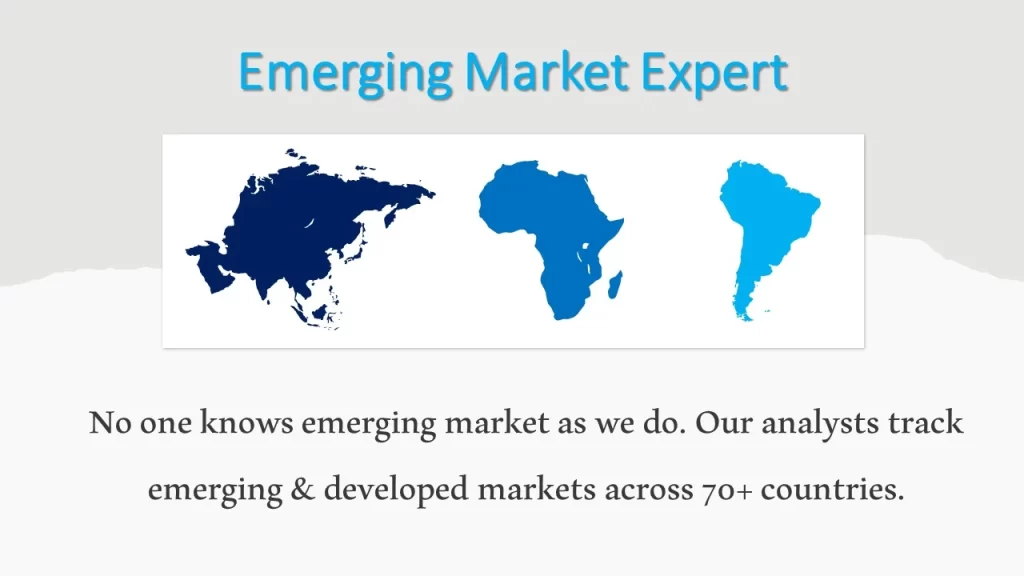Robotic Welding Market Size & Analysis Report by Type, By Payload, By End-User Industry and By Region – Global Opportunities & Forecast 2021-2028
Robotic Welding Market Size & Analysis Report by Type (Spot Welding Robots, Arc Welding Robots), By Payload (below 50, 50-150 Kilograms, above 150 Kilograms), By End-User Industry (Automotive and Transportation, Electrical and Electronics, Metal and Machinery, Aerospace and Defence, and Others), and By Region
Robotic welding market is projected to reach at USD 14,363 million by 2028 at a CAGR of 10.8% during the forecast period.

Robotic Welding Market Overview
Robotic welding is an automated process that uses robots, which perform and handle the welding process based on a program, and it can be reprogramed according to the project. Robotic welding is an advanced version of automated welding in which machines conduct the welding, but the welder still controls and supervises the process. The use of robotic welding machine, allow for error-free, less waste and quick completion of process with more excellent safety. It provides more flexibility, as it can reach unapproachable locations and perform complicated and accurate weld lines, and weld more quickly than manual welding.
To have an edge over the competition by knowing the market dynamics and current trends of “Robotic Welding Market”, request for Sample Report here
Major Robotic Welding Market Drivers
The factors driving the global robotic welding market include increasing preference for robotic welding to reduce long-term cost, increase reliability and productivity. Due to time-saving features and high productivity, robotic welding is becoming essential to metal, heavy industries and is widely being used in automotive industry. According to the International Federation of Robotics statistics, the number of industrial robots in operation has increased each year and is anticipated to grow in the future. Robot density in the United States rose from 176 units in 2015 to 255 units in 2020. The implementation of the industry 4.0 concept in the manufacturing process will further contribute to the market growth of robotic welding. For instance, according to one of the leading players, Kawasaki Heavy Industries, Ltd., the robot business will significantly expand by commercializing autonomous robotic technology that applies IoT and AI to resolve issues arising from demographics becoming older and labor shortage.
Restraint in the Robotic Welding Market
However, the high purchasing cost of the machine can act as a restraint and hamper the market growth of robotic welding. It is not feasible for a smaller project as the time needed for a program may be longer than the welding process. Hence, for smaller projects, human welding process could finish much faster. The timing depends on project size and operator programming speed. This factor can hamper the growth of the robotic welding market.
Do you want to know more about the Research process and detailed Methodology, Request Research Methodology of this report
Type – Segment Analysis
Based on the type, spot welding robot is expected to grow at higher CAGR during the forecast period of the global robotic welding market. With the help of spot welding, two or more metal sheets are welded by applying pressure and heat from the electric current on the weld area. Spot welding is a resistance welding that has been popularly used as a metal joining solution for automotive and other manufacturers over the years. Spot welding is more cost-effective than other welding solutions because it does not require any filler metal or shielding gas. These factors will propel market growth.
End-User Industry – Segment Analysis
Based on the end-user industry, automotive and transportation is expected to grow at higher CAGR over the forecast period. According to the American Welding Society, robotic welding mainstay in the automotive industry. In fact, the car body contains 4500 spot weld joints. Not only have robotic welders increased safety in factories, but also save the production time. Large robots with high payload capabilities and long reach can spot weld car body panels while smaller robots weld sub-assemblies such as brackets and mounts.
In case, any of your pain points areas are not covered in the current scope of this report, Request for Free Customization here
Regional – Segment Analysis:
Based on the region, APAC is expected to grow at a higher CAGR over the forecast period. The countries include China, India, and Japan, among others, are considered manufacturing hubs for electronic equipment and existence of leading automotive companies such as Toyota Motor Corporation, Honda Motor Co., Ltd, Hyundai Motor Company, among others. For instance, Honda Motors Co., LTD use robotic welding for spot welding, seam welding and MIG welding to weld various sheet metal parts to form the basic frame and other scooter panels. The industrial revolution towards digitalization due to the implementation of industry 4.0 is expected to transform manual operation into automatic operation in the manufacturing industry, which will lead to the growth of the robotic welding market.

Top Market Players
Various notable players operating in the market, include, Kawasaki Heavy Industries, Ltd., Fanuc Corporation, Kuka AG, Comau S.p.A., ABB, Yaskawa Electric Corporation, Panasonic Corporation, Mitsubishi Electric Corporation, OTC Daihen Inc., Hyundai Robotics, among others.
Key Developments:
-
- In 2020, KEMPPI launched a versatile solution for robotic welding. The solution includes special MIG/MAG welding devices, application software, and welding programs in a system that is compatible with all welding robots and very fast and easy to implement.
Segments covered in the Report:
- In 2020, KEMPPI launched a versatile solution for robotic welding. The solution includes special MIG/MAG welding devices, application software, and welding programs in a system that is compatible with all welding robots and very fast and easy to implement.
The global robotic welding market has been segmented on the basis of type, payload, end-user industry, and region. Based on type, the market is segmented into spot welding robots, and arc welding robots. Based on payload, the market is segmented into below 50 kilograms, 50-150 kilograms, and above 150 kilograms. Based on end-user industry, the market is segmented into automotive and transportation, electrical and electronics, metal and machinery, aerospace and defence, and others.
For detailed scope of the “Robotic Welding Market” report request a Sample Copy of the report
|
Report Coverage |
Details |
| Market Base Year |
2020 |
| Market Forecast Period |
2021-2028 |
| Market Revenues (2028) |
USD 14,363 Million |
| Base Year & Forecast Units |
Revenues (USD Million) |
| Market Segment | By Type, By Payload, By End-User Industry, By Region |
| Regional Coverage | Asia Pacific, Europe, North America, and RoW |
| Companies Profiled | Kawasaki Heavy Industries, Ltd., Fanuc Corporation, Kuka AG, Comau S.p.A., ABB, Yaskawa Electric Corporation, Panasonic Corporation, Mitsubishi Electric Corporation, OTC Daihen Inc., Hyundai Robotics, among others; a total of 10 companies covered. |
| 25% Free Customization Available | We will customize this report up to 25% as a free customization to address our client’s specific requirements |
Market Segmentation
Global Robotic Welding Market by Type
-
- Spot Welding Robots
- Arc Welding Robots
Global Robotic Welding Market by Payload
-
- Below 50 Kilograms
- 50-150 Kilograms
- Above 150 Kilograms
Global Robotic Welding Market by End-User Industry
-
- Automotive and Transportation
- Electrical and Electronics
- Metal and Machinery
- Aerospace and Defence
- Others
Global Robotic Welding Market by Region
-
-
North America Robotic Welding Market (Option 1: As a part of the free 25% customization)
- North America Robotic Welding Market by Type
- North America Robotic Welding Market by Payload
- North America Robotic Welding Market by End-User Industry
- US Robotic Welding Market All-Up
- Canada Robotic Welding Market All-Up
-
Europe Robotic Welding Market (Option 2: As a part of the free 25% customization)
- Europe Robotic Welding Market by Type
- Europe Robotic Welding Market by Payload
- Europe Robotic Welding Market by End-User Industry
- UK Robotic Welding Market All-Up
- Germany Robotic Welding Market All-Up
- France Robotic Welding Market All-Up
- Spain Robotic Welding Market All-Up
- Rest of Europe Robotic Welding Market All-Up
-
Asia-Pacific Robotic Welding Market (Option 3: As a part of the free 25% customization)
- Asia-Pacific Robotic Welding Market by Type
- Asia-Pacific Robotic Welding Market by Payload
- Asia-Pacific Robotic Welding Market by End-User Industry
- China Robotic Welding Market All-Up
- India Robotic Welding Market All-Up
- Japan Robotic Welding Market All-Up
- Rest of APAC Robotic Welding Market All-Up
-
RoW Robotic Welding Market (Option 4: As a part of the free 25% customization)
- RoW Robotic Welding Market by Type
- RoW Robotic Welding Market by Payload
- RoW Robotic Welding Market by End-User Industry
- Brazil Robotic Welding Market All-Up
- South Africa Robotic Welding Market All-Up
- Saudi Arabia Robotic Welding Market All-Up
- UAE Robotic Welding Market All-Up
- Rest of world (remaining countries of the LAMEA region) Robotic Welding Market All-Up
-
Major Players Operating in the Robotic Welding (Option 5: As a part of the Free 25% Customization – Profiles of 5 Additional Companies of your Choice)
-
- Kawasaki Heavy Industries, Ltd.
- Fanuc Corporation
- Kuka AG
- Comau S.p.A.
- ABB
- Yaskawa Electric Corporation
- Panasonic Corporation
- Mitsubishi Electric Corporation
- OTC Daihen Inc.
- Hyundai Robotics
Frequently Asked Question About This Report
Robotic Welding Market [UP2402-001001]
Robotic welding market is anticipated to grow at 10.8% CAGR during the forecast period.
The factors driving the global robotic welding market include increasing preference for robotic welding to reduce long-term cost, increase reliability and productivity. Due to time-saving features and high productivity, robotic welding is becoming essential to metal, heavy industries and is widely being used in automotive industry.
Asia Pacific is expected to grow at a higher CAGR over the forecast period. The countries include China, India, and Japan, among others, are considered manufacturing hubs for electronic equipment and existence of leading automotive companies such as Toyota Motor Corporation, Honda Motor Co., Ltd, Hyundai Motor Company, among others
The leading players operating in the market, include, Kawasaki Heavy Industries, Ltd., Fanuc Corporation, Kuka AG, Comau S.p.A., ABB, Yaskawa Electric Corporation, Panasonic Corporation, Mitsubishi Electric Corporation, OTC Daihen Inc., Hyundai Robotics, among others.
- Published Date: Mar-2022
- Report Format: Excel/PPT
- Report Code: UP2402-001001
Licensing Options
Single-User License:
The report is used by the purchaser (One Individual) only
Multi-User License:Report is shared with maximum 5 users (employees) including the purchaser of the purchasing corporation only
Corporate License:
Report is shared with unlimited user (employees) of the purchasing corporation only
The report is used by the purchaser (One Individual) only
Multi-User License:Report is shared with maximum 5 users (employees) including the purchaser of the purchasing corporation only
Corporate License:
Report is shared with unlimited user (employees) of the purchasing corporation only
Robotic Welding Market Size & Analysis Report by Type, By Payload, By End-User Industry and By Region – Global Opportunities & Forecast 2021-2028
$ 4,499.00 – $ 6,649.00
Why GMI Research







